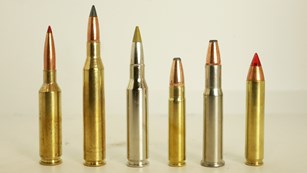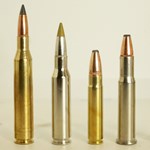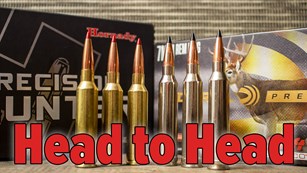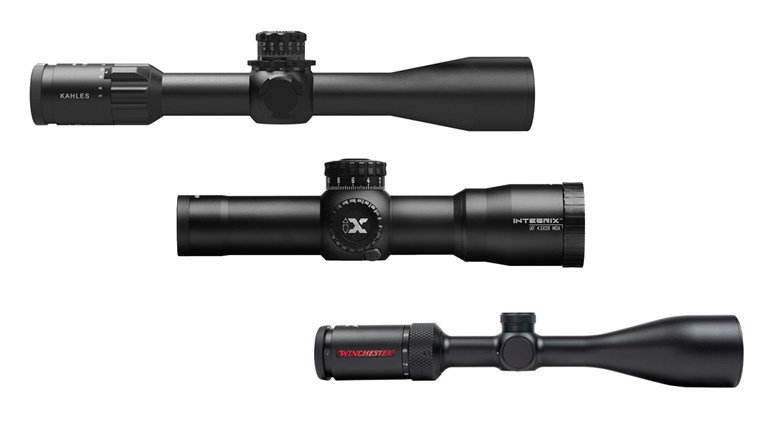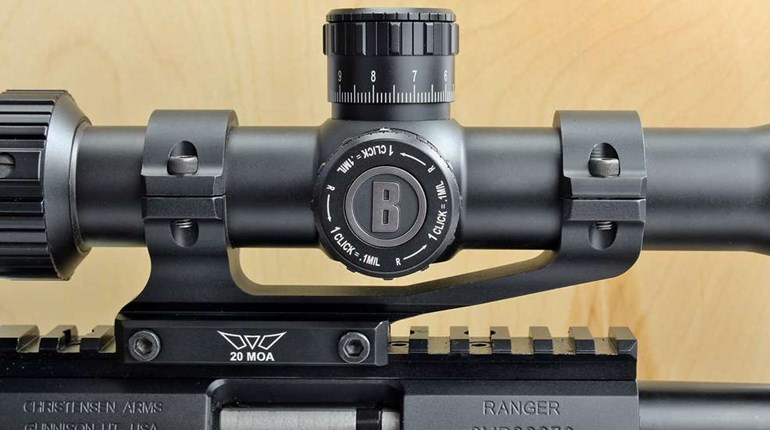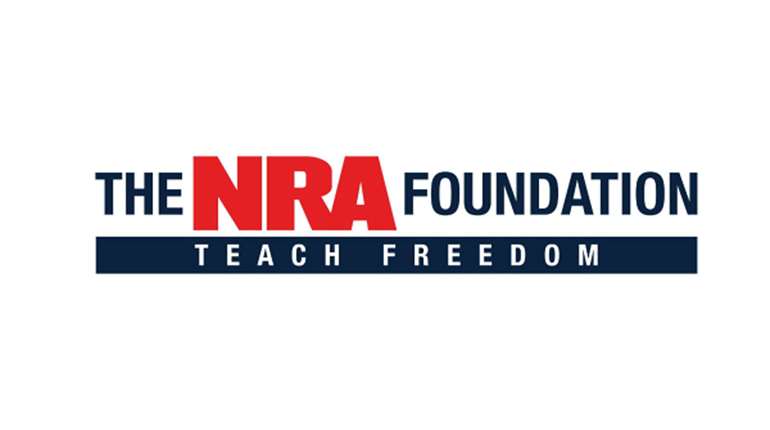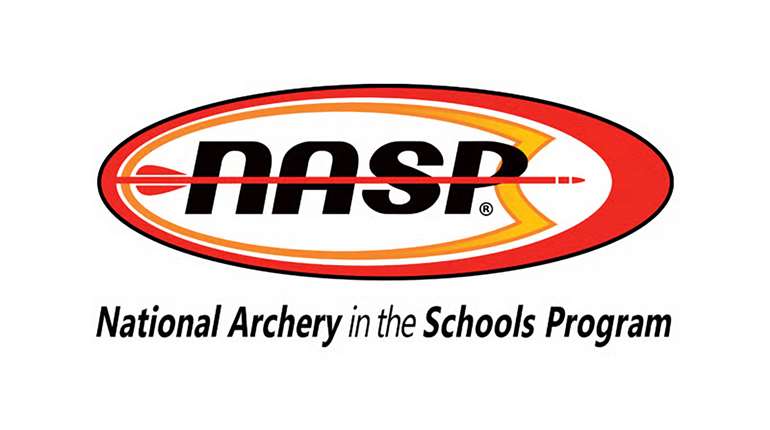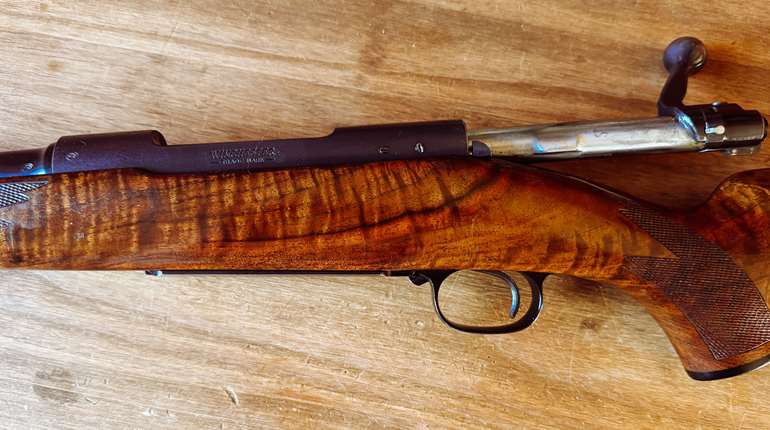You are calling coyotes and a big dog is coming strong. But for some reason he smells a rat and hangs up. He is barking at you from long range, but you think you can make the shot. You dig in your pocket for your rangefinder then take a reading. He is at 375 yards, pretty doable. Then you dial up on the scope for the distance and get behind your AR-15 resting on the sticks, but before you can settle on his shoulder, he takes off.
In a lot of hunting situations, speed equals success. The best hunters are decisive and act quickly. But when you are dealing with long-range shooting you need information before you can shoot. Getting that info faster and being able to use it to make the shot quickly can mean the difference between success and disappointment.
The Nikon M-223 2.5X-10X-40mm Laser IRT riflescope with the BDC 600 reticle is the tool that can make that happen. It combines a 2.5X-10X-40mm scope with an internal laser rangefinder. Simply place the crosshairs on the object you want to range and push the button on the side of the scope for an instant reading that you see while looking through the scope. You can even use a mode that compensates for steep up or down angles. With the reading, you simply move to the correct aiming point on the reticle and shoot, knowing that the bullet drop is solved.
The Nikon features a BDC (Bullet Drop Compensating) multiple aiming point reticle that is calibrated to the trajectory of the .223 Rem. cartridge with a 55-grain polymer tip bullet at 3240 fps. This means that, with a 100-yard zero, the first circle below the crosshairs will be your aiming point for 200 yards, the third circle for 300 yards and so on to 600 yards. The hash marks between the circles will split the difference.
All well and good if you are using that exact load and your rifle produces 3240 fps muzzle velocity. But, suppose you prefer a different bullet or load? Or what if you are shooting a carbine with a shorter barrel and lower muzzle velocity?
No problem. You simply go to nikonsportoptics.com and open the Spot On software. (Note: You may need to download Java, as I did, to make it work, but the links and instructions are on the page.) You can pick from Nikon’s extensive library of ammo and bullets or you can enter your own data. Spot On is designed to work with any Nikon scope, not just the laser model. It’s also designed to work with all the popular rifle cartridges.
Once you enter the data you can have an instant view of the reticle with the distances for each aiming point for that load. For example, I plugged in a measured velocity of 3397 fps with a Hornady 53-grain V-Max Superformance load and a 200-yard zero. The first circle is for 289 yards, the next 389 yards, then 485 and 592 and 693 yards. While I would not shoot at a coyote at 693 yards with a .223, I would try a steel target, and by modifying the load and zero I have added almost 100 yards to my aiming point options.
The scope is a 2.5X-10X-40mm. The numbers on the power ring are visible from the shooter’s position as the numbers are on the back of the ring. There is a quick-focus ring on the rear of the scope. The turrets are quarter-minute clicks, which proved to be positive and accurate during testing. The turrets have a return-to-zero feature. This allows you to pull up on the cap to free it and to set the indicators on the cap for your zero. That way, if you move the dial for distance or windage you can return to the previous zero. The target turrets do not have a locking mechanism to secure them from turning inadvertently but the scope would benefit from this feature to ensure the rifle stays in zero. The target turrets are designed to be turned to move the point of impact to compensate for wind or distance. So you have the option of the multiple aiming point reticle, as well as dialing up for distance with a 60 MOA range. A quick calculation shows that it will take a 55-grain bullet to 1,000 yards by using the bottom aiming point and dialing in 37.6 MOA off the 100-yard zero. In other words, come up 150 clicks and use the bottom 600-yard aiming point to hit a 1,000-yard target. Of course, the .223 Remington is down to 106 ft.-lbs. by then, so don’t expect much in the way of dramatic results.
The M-223 Laser IRT riflescope comes with a mount designed to fit a Picatinny rail. If I had to find a complaint, this would be it. The mount is a bit fragile for this scope. My first one broke. In fairness, the bolt was probably over-torqued when mounting; but it’s a rather wimpy bolt. I replaced the entire mount and used a precision torque wrench to install it and it has proven fine so far.
Even if you wanted to use this scope on a different rifle, like a .204 or a .308 Win. or most any other cartridge, simply use Spot On to find aiming points on the reticle for your load.
But a computer can only take things so far. There are variables that are not controllable such as elevation, barometric pressure and other local conditions. Also, most bullets on the market have a published ballistic coefficient that is a bit optimistic. The only positive truth in shooting is on the targets. You must verify your data by shooting.
I think Spot On proves to be amazingly close, particularly if you feed it detailed information concerning actual measured muzzle velocity. But shooting is the final step in the process. Take clear, concise notes. Don’t think you will remember the numbers because, unless you are Rain Man, you won’t. Write them down. Once you master this system, which is pretty easy, long-range shooting becomes a lot easier and much faster.
Now, when that coyote is barking insolently at you, thinking that the distance keeps him safe, you can send a bullet his way in an instant to teach him the folly of his ways.
Technical Specifications:
Type: variable-power riflescope w/integrated laser rangefinder
Magnification: 2.5X-10X
Objective Lens Diameter: 40mm
Rangefinder Distance: 32-735 yds.
Eye Relief: 3.5"
Exit Pupil: 4mm @ 10X;16mm @ 2.5X
Field of View @ 100 yds: 7.3'-23.6'
Dimensions: height 2.9"; width 3.1"; length 12.2"; weight 21.5 ozs. w/o battery
Construction: aluminum main tube; powered by (one) CR-2 lithium battery
MSRP: $849


